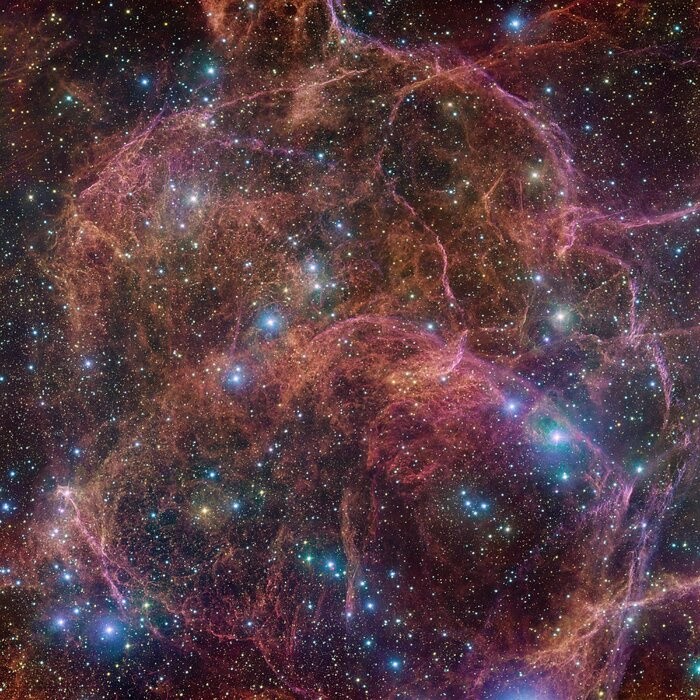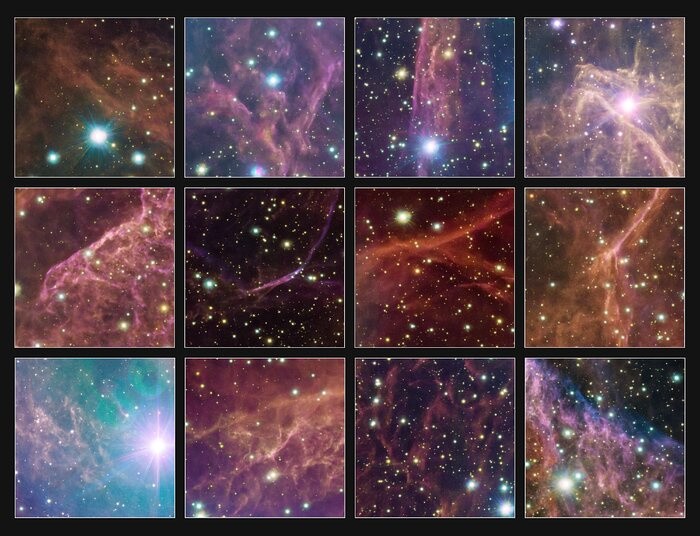European South Observatory's (ESO) Very Large Telescope (VLT) captured a scene deep in space that looks like it was ripped off from a fairytale book. Is it a trail of dragons? Or a web of ghosts? Well, it is merely the haunting wisps of a stellar corpse.

Wispy Remains
All that's left of the enormous star after it was obliterated by a devastating explosion 11,000 years ago is its wispy structure of pink and orange clouds. According to ESO, the biggest stars typically end their life in a catastrophic explosion known as a supernova.
Shock waves from these explosions travel through the surrounding gas, compressing it and forming complex, thread-like structures. The waves produce energy that heats the gaseous tendrils of the remnant, which causes them to shine brilliantly in this photograph, as explained by ESO.
This 554-million-pixel image features an extremely detailed view of the Vela supernova remnant, which bears the name of the southern constellation Vela, also known as The Sails.
This stunning image is so massive that it can hold nine full Moons and the whole cloud where the remnant lies is even larger. This supernova corpse is only 800 light-years away from our planet, making it one of the nearest remnants.
The filaments that can be seen in the photograph were produced when the progenitor star's outer layers were hurled into the surrounding gas during the explosion. Protons and electrons are squeezed into neutrons inside the neutron star, which is all that is left of the supernova.
The Vela remnant also features a neutron star that is located slightly outside of the photo to the upper left. It is a pulsar that spins on its own axis at an astonishing speed of more than ten times per second.
Read Also : ESO Captures Kleopatra Asteroid's Most Detailed Images-Very Large Telescope Reveals It Has Dog Bone Shape
Mosaic of Observations
This stunning image is part of a mosaic of observations captured with the wide-field camera OmegaCAM at the VLT Survey Telescope (VST), housed at ESO's Paranal Observatory in Chile.

Images can be captured using a variety of filters that let different colored light pass through the 268 million pixel sensor. Four different filters-magenta, blue, green, and red-were combined to create this unique photograph of the Vela remnant, as per ESO.
The National Institute for Astrophysics (INAF) of Italy is the owner of the VST, which is also one of the largest telescopes for scanning the night sky in visible light.
This image is an illustration from one such study, the Southern Galactic Plane and Bulge VST Photometric H Survey (VPHAS+). This survey has been mapping a significant area of our galaxy for more than seven years, which has helped astronomers better understand how stars are born, how they develop and eventually die.
Related Article : ESO's Very Large Telescope Catches A Starburst Galaxy Brimming In A 'Whirlpool of Gold'
This article is owned by Tech Times
Written by Jace Dela Cruz
ⓒ 2025 TECHTIMES.com All rights reserved. Do not reproduce without permission.




